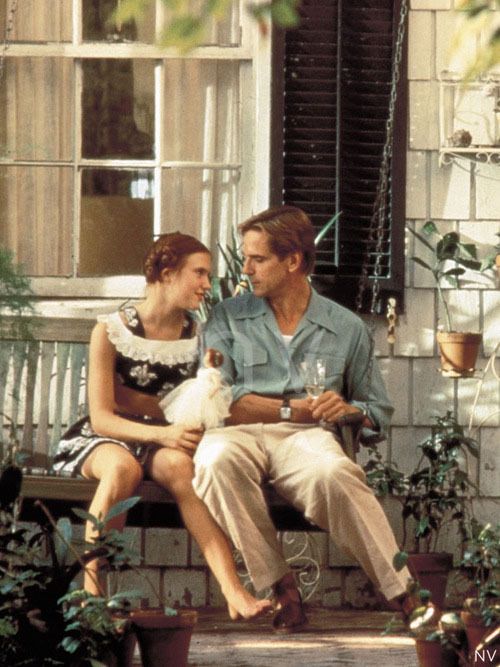The Horrors of Lolita
February 15, 2023
As years go by, certain words lose their original meaning, sometimes the meaning just changes, and other times the word itself is just misused. This is the case with the word “Lolita.”
What is the meaning of Lolita?
“Lolita” means many things in different countries. For example, in Japan the word is used to refer to cuteness, elegance and modesty as stated by the article titled “Lolita Fashion: Japanese Street Style” posted in the website V&A.
However, the term takes a dark turn in the United States, where “Lolita” describes a young girl that is commonly between the ages of 9-14, as precociously seductive, as stated by Wikipedia.
In my opinion, the term “Lolita” is inherently toxic when referring to others. The term Lolita originated from the 1955 novel by Vladimir Nabokov titled Lolita. This novel is in the point of view of a middle-aged man, who falls in love with his 12-year-old stepdaughter. The term has been phased out thankfully, but since it’s rare to hear, it’s become somewhat of a compliment to give girls, even though the meaning hasn’t changed from its original dark roots.
Where did the term Lolita originate?
The novel Lolita is structured as an autobiography written by Humbert Humbert during his time at the sanatorium and then in prison. It features a vivid but unreliable narration of events that sees Humbert Humbert and his infatuations with 12-year-old Dolores, or better known as Lolita. The word “Lolita” was made for this book and to describe how Humbert and some adult men see Lolitas/young girls. This novel became a movie originally in 1962 and was remade in 1997, increasing the popularity of its characters.
Some of the misconceptions of Lolita
Since the word “Lolita” comes from a book, it’s expected for some people to misunderstand the meaning. Some misconceptions of the book or the term itself are reasonable. For example, many people sympathize with Humbert (the middle-aged man), which is reasonable considering the whole book is in his point of view.
In contrast there are some misconceptions from the book that miss the point entirely; one of them is the idea that Dolores (Lolita) wanted to get kidnapped and get taken advantage of, and since she wanted it, it was her fault for ‘tempting’ Humbert Humbert.
That misconception is more prominent in the 1997 film, tilted Lolita because that movie shows Lolita initiating most of the uncomfortable interactions. For example, there is a scene in which Lolita runs up to Humbert and kisses him, and another where she makes a multitude of lewd comments toward him.
Some try and defend Humbert by saying that he was right because Lolita was “asking for it”. However, it seems that like Humbert, they forgot how old Lolita was in the film and in the novel.
Why was Lolita romanticized?
A “romantic” is described by Cambridge dictionary as someone that talks about something in a way that makes it sound better than it really is. This happens an unworldly number of times to the word “Lolita”.
One example is in the show Riverdale where the titular character Archie is taken advantage of by his high school teacher Geraldine Grundy. In the book Lolita, the author makes sure that the reader understands that the relationship between Dolores and Humbert is wrong by having other characters react negatively toward the situation as a whole.
However, in Riverdale there isn’t a scene where they demonize Archie’s and Geraldine’s relationship. A scene like this would be necessary if the intent was to show why these forms of relationships are toxic. Instead, the writers of Riverdale romanticize this relationship by essentially making Archie and Geraldine a Romeo and Juliet type of couple. These abusive relationships being represented as romantic is genuinely disgusting and is only going to normalize these relationships in the future.
Another example of this, is in the song titled “Lolita” released in 2012 by Lana del Rey. In the song the titular Lolita character is described as wanting the relationship and encouraging the older man to pursue her even though it’s taboo. Lana del Rey’s work has been a prominent figure with the romanization of Lolita, by making it seem that it was Dolores’s fault for the whole situation, even though she never had control of the situation.
This is also harmful when you take into consideration how young Lana del Rey’s fans are. According to Fandom wiki Lana del Rey’s fanbase ranges from 15 to 18. These ages are easily influenced by the media they consume, and having the message that young girls should seek older men is going to put many young girls in dangerous situations.
For more information/commentary on Lolita
- We need to talk about Lolita. By Lola Sebastian
https://youtu.be/GPANXxV1iFo .
- The Lolita resurgence… when history repeats itself. By Jordan Theresa
- The nymphet Femme Fatale (As popularized by misreading of Lolita). By Yhara Zayd
- What’s the deal with Lolita? By revelreads
- Vladimir Nabokov, Lolita. By YaleCourses






Dulce • Feb 23, 2023 at 11:26 am
Maravilloso escrito, y mas cuando lo hace una niña adolescente. Aún en estos tiempos condenamos a la mujer en todos los sentidos sin importar la edad y la inocencia. Arriba las “Lolita” de todos los tiempos